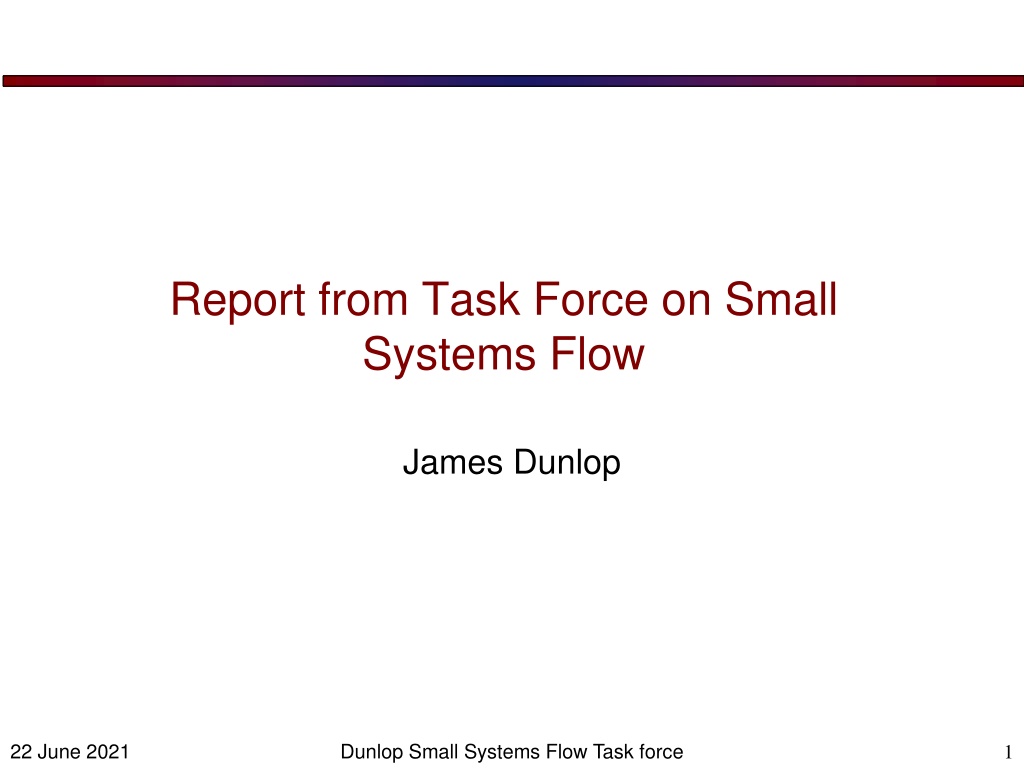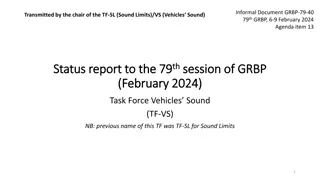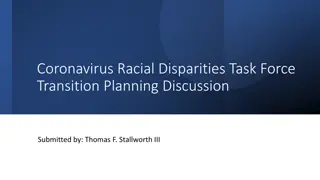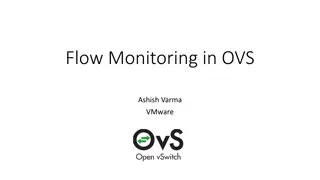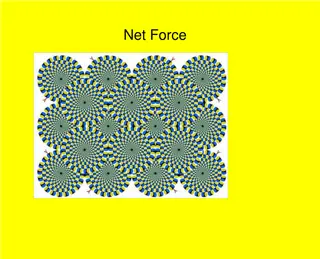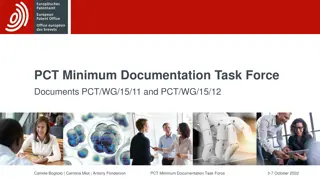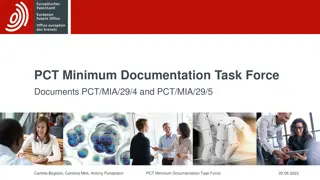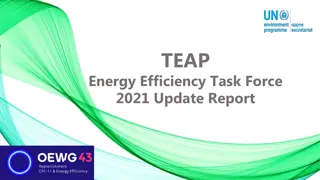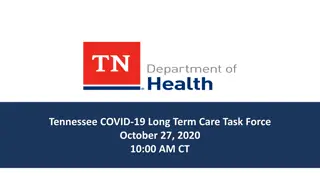Small Systems Flow Task Force Report June 2021
The report by the Small Systems Flow Task Force led by James Dunlop in June 2021 delves into conflicting results from different analyses on small systems in nuclear collisions. The task force's methodology, collaborations, conclusions, and recommendations moving forward are discussed, emphasizing the need for further data and improved analysis methods. Explore the insights on rapidity coverage, non-flow effects, and physics questions raised by the discrepancies.
Download Presentation

Please find below an Image/Link to download the presentation.
The content on the website is provided AS IS for your information and personal use only. It may not be sold, licensed, or shared on other websites without obtaining consent from the author.If you encounter any issues during the download, it is possible that the publisher has removed the file from their server.
You are allowed to download the files provided on this website for personal or commercial use, subject to the condition that they are used lawfully. All files are the property of their respective owners.
The content on the website is provided AS IS for your information and personal use only. It may not be sold, licensed, or shared on other websites without obtaining consent from the author.
E N D
Presentation Transcript
Report from Task Force on Small Systems Flow James Dunlop 22 June 2021 Dunlop Small Systems Flow Task force 1
Starting Point STAR QM2019 Quark Matter 2019: STAR preliminary results in conflict with PHENIX published results Conflict is in v3 in the 2 smallest systems, p+Au and d+Au In response to 2020 PAC recommendation(s), B. Mueller formed task force to investigate apparent discrepancy Membership: Constantin Loizides, Oak Ridge National Laboratory Jean-Yves Ollitrault, Institute of theoretical Physics, Saclay, France Sergei Voloshin, Wayne State University 22 June 2021 Dunlop Small Systems Flow Task force 2
Methodology Task force invited collaborations to present current status and answer detailed questions Leads from collaborations identified, spokespeople also invited PHENIX: R. Belmont and J. Nagle STAR: S. Huang and R. Lacey Meetings as needed for further exploration First meeting Dec. 2020, prior to Initial Stages 2021 In 2021, B. Mueller passed on coordination of task force to JCD Final meeting in April, conclusions written in May Collaborations very frank and receptive to opening their books : Thank you! Many of the conclusions are already in wide discussion in the community, driven by the new results PHENIX showed at Initial Stages (see R. Belmont s talk) 22 June 2021 Dunlop Small Systems Flow Task force 3
Conclusions in a Nutshell In summary, there is no sign that any of the two analyses is technically wrong. We believe that all the observed differences could be ascribed to the different treatment of nonflow effects and of the flow (and non-flow) rapidity dependence. In conclusion, this controversy brings up useful physics questions. Resolving them will require more data, taken with upgraded STAR and the sPHENIX detectors, and probably improved methods of analysis. 22 June 2021 Dunlop Small Systems Flow Task force 4
Rapidity Coverage Au PHENIX p/d/He Pseudorapidity Figure from R. Belmont, IS2021 STAR 2015 2015: PHENIX and STAR rapidity coverage has no overlap Default PHENIX: correlate Au-going FVTXS and BBCS with mid- CNT Explorations of other choices shown to committee and in conferences, and will be published Default STAR: symmetric correlations with | |<0.9, | |>1.5 Committee: explore in further detail within acceptance of TPC , even though the range is limited" 22 June 2021 Dunlop Small Systems Flow Task force 5
Indications of Rapidity Dependence Au p/d/He PHENIX Default Pseudorapidity PHENIX Symmetric PHENIX sees large changes in v3 when changing For example, the symmetric case, by including FVTXN in the 3- particle correlation technique, makes v3 imaginary PHENIX plans to publish a long paper with all correlation combinations Committee: The forthcoming publication by PHENIX with the detailed rapidity dependence of the correlations will be a very useful input 22 June 2021 Dunlop Small Systems Flow Task force 6
PHENIX dependence: Default vs. Symmetric Default: Symmetric: Figures from R. Belmont, IS2021 Symmetric case: imaginary v3 in p+Au and d+Au Dependence on in p+Au and d+Au: all details to be published 22 June 2021 Dunlop Small Systems Flow Task force 7
Committee Speculations: Origin of Differences Nonflow There is no robust way of eliminating nonflow, and the two analyses differ in how they treat them We recommend that STAR continues to explore the robustness of their results with respect to the subtraction method. We also recommend that PHENIX carry out additional estimates of the magnitude of the residual nonflow correlation, in addition to the systematic uncertainty estimated in earlier publications. Longitudinal decorrelations The two collaborations also differ in how they model the rapidity dependence of anisotropic flow STAR: leads to overestimate PHENIX: leads to underestimate Centrality The comparison between the two collaborations should be carried out within similar centrality ranges. Rapidity dependence of properties of system? More detailed studies of the rapidity dependence might even reveal that at negative rapidities (Au going direction, where PHENIX evaluates the event-plane), anisotropic flow is determined by the positions of participant nucleons, while at midrapidity probed by STAR, it is mostly due to fluctuations at the sub- nucleonic scale. In this case, not only the analyses, but also the interpretation of the results by the collaborations would both be correct. 22 June 2021 Dunlop Small Systems Flow Task force 8
Future: Detailed Rapidity Structure Au PHENIX p/d/He Pseudorapidity Figure from R. Belmont, IS2021 STAR 2015 Now: STAR EPD (2.1-5.1) STAR EPD STAR iTPC(-1.5-1.5) 2024: sPHENIX EPD? (2.1 sPHENIX (-1.1-1.1) sPHENIX EPD? (2.1-5.1?) We furthermore recommend that more data will be taken in the future, with the upgraded STAR and the new sPHENIX detectors which significantly extend the rapidity coverage. 22 June 2021 Dunlop Small Systems Flow Task force 9
Conclusions in a Nutshell In summary, there is no sign that any of the two analyses is technically wrong. We believe that all the observed differences could be ascribed to the different treatment of nonflow effects and of the flow (and non-flow) rapidity dependence. In conclusion, this controversy brings up useful physics questions. Resolving them will require more data, taken with upgraded STAR and the sPHENIX detectors, and probably improved methods of analysis. 22 June 2021 Dunlop Small Systems Flow Task force 10
